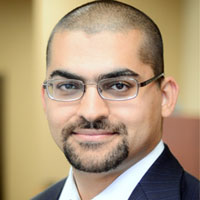Hair Restoration Therapies Flourish as Economy Improves
Cosmetic procedures like hair restoration are not the top priority of people during tough economic conditions. However, as economy improves people get more disposable income that allows them to opt for cosmetic procedures.
According to John Kahen, M.D., a leading hair transplant surgeon at Beverly Hills Hair Restoration, there is a correlation between improving economy and an upswing in hair transplants. Dr. Kahen has seen a surge in hair transplant procedures over the past one year, which indicates that the economy is recovering. As the economy improves further, he expects more people to come forward to get this cosmetic procedure done to improve their looks.
Hair transplants are not affordable to all individuals, so they consider several alternatives before going for these procedures.
More than 50 million men and 30 million women suffer from clinical hair loss in America, but all of them are not prospective cases for hair transplant surgeries. Hair transplant surgeries like Follicular Unit Extraction (FUE) and Follicular Unit Transplant (FUT) are advised for male patients suffering from androgenic alopecia (male pattern baldness). The ideal age for hair transplant in most cases of androgenic alopecia is 40 years and above. It's the time when the pattern of the baldness becomes distinct in these individuals.
Hair transplants are not generally prescribed for women suffering from common baldness. The common type of baldness found in women is characterized by uniform thinning of hair line, so they are not the ideal candidates for hair transplants. However, hair transplant could be performed in other cases of hair losses, for example, those caused by accidents, injury or traction (pulling).
According to Dr. Kahen, hair transplants are the best ways for men to deal with hair loss. The most beneficial aspect of hair transplant is that it is safe and has no side effects. They can regain self-esteem and personal satisfaction by restoring their young look. Until a few years ago, hair transplant procedures were popular among celebrities alone. Today, the scenario is totally different; thanks to the growing awareness and success of these procedures, hair transplants have become popular among people of all categories.
The latest advancements in hair transplants have created a revolutionary wave in hair transplants. Techniques like ARTAS help hair restoration professionals improve the efficiency and accuracy of the treatment.
ARTAS is a computer-assisted and image-guided hair restoration method uses an FDA-cleared technology that was developed with several leading hair restoration physicians. The process involves transplanting healthy follicles to the patient's scalp most affected by baldness with the help of robots. The procedure is minimally invasive and utilizes sophisticated digital mapping and precision robotics to deliver beautiful, natural looking results.
HairFear
Frequently asked questions about hair transplant procedures
How much does a hair transplant cost?
Hair transplants can vary in price based off of the area in the world that you are interested in getting a hair transplant as well as the size of the area where you may need a hair transplant. Experienced doctors in the United States will often charge some of the highest prices for a hair transplant worldwide and this is why so many travelers make the move to other parts the world like Turkey, India, Thailand, Mexico...etc for their hair transplants.
Will a hair transplant hurt?
Although hair transplants may look like a particularly
unpleasant or painful experience is actually very little discomfort involved
with the surgery itself. Hair transplants are always done under an anesthetic so there's absolutely zero pain during the treatment itself. Many people actually relate the process as being very similar to going to the dentist for filling or root canal. Mild pain can persist over the course of postop treatment but he generally just resumes for a few days.
Who can deliver the best surgery?
It's usually best to consider working with surgeons who have and IAHRS certification or international alliance of hair restoration surgeons recognition. IAHRS can often deliver recommendations for the best surgeons in each particular area.
Is this scarring noticeable?
Any type of hair transplant will require the use of incisions throughout the scalp. There can also sometimes be a small scar from the donor area towards the back of the scalp. Asking to look at photos of the surgeon's previous work will help you to see roughly how bad the scarring could be. In most cases an experienced professional can limit the look of scarring and noticeable marks from the surgery.
How long does it take for the hair to grow?
In most cases hair growth will start within eight months and you can start to see a full effect from the hair transplant after a full year. The initial signs of growth can usually start between 3 to 4 months after the surgery.
Are the results permanent?
The hair follicles that are transplanted are generally the ones which are genetically resistant against the symptoms of baldness. As long as you receive hair loss treatment later in your life after the symptoms of balding have started to subside, you can have a better chance at permanent results.
While everyone know you've had surgery?
If you want to limit the chance that people may find out about your surgery it's important to give at least three weeks of healing as the surgical area will be affected and red just after surgery. After around a month of healing it can look far less noticeable. You could consider wearing a hat while time passes or opting for some extra time off if possible.
How long should I rest after surgery?
It's recommended to rest for at least a few days after surgery so that your body can recover. Trenton to over exert yourself and limit sexual activity, running in the gym for around 10 days after surgery.
Is it possible to lose more hair as a result of surgery?
There is always a chance of shock loss which happens when the hair is weak and miniaturizing after the surgery. As long as the surgeon is choosing the correct hair follicles and performing the surgery well it's possible to minimize the chance of this happening however.
Will I need another hair transplant?
The need for another transplant really depends on the individual. With a solid foundation surgery and working to potentially bolster results with drug therapy, you can improve the stability of the hair that was transplanted as well as prevent further loss. Getting a hair transplant early
on in your 20s or early on in life could lead to needing long-term transplants as hair loss can be progressive.







